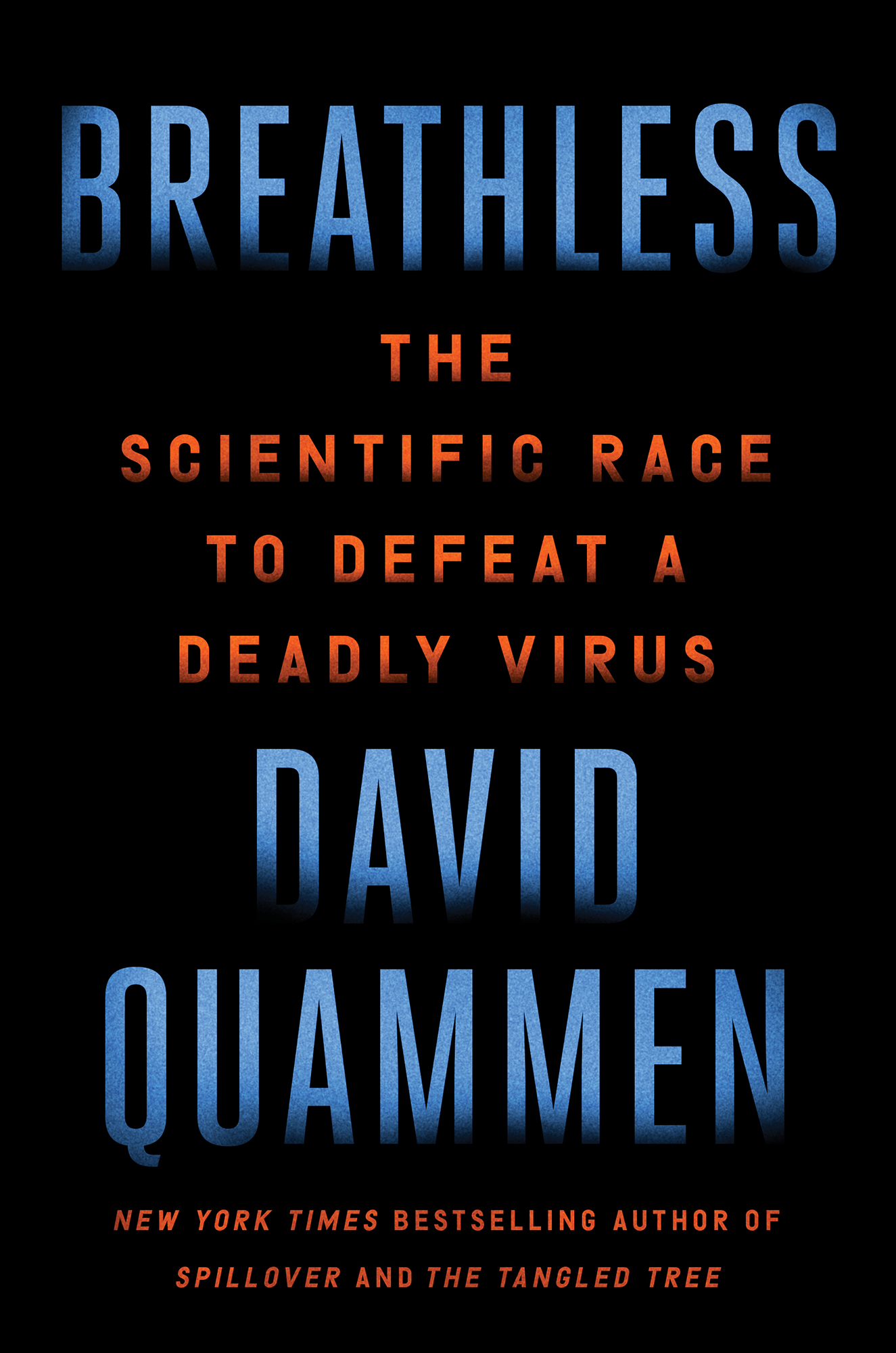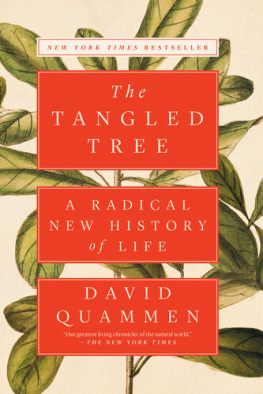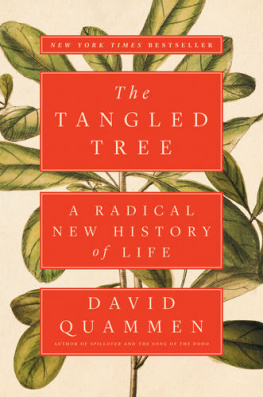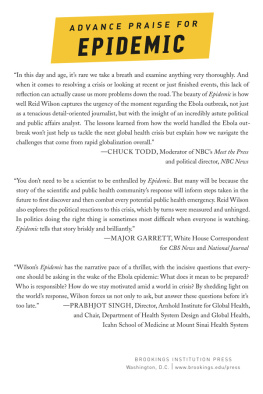David Quammen - Breathless : The Scientific Race to Defeat a Deadly Virus
Here you can read online David Quammen - Breathless : The Scientific Race to Defeat a Deadly Virus full text of the book (entire story) in english for free. Download pdf and epub, get meaning, cover and reviews about this ebook. year: 2022, publisher: Simon & Schuster, genre: Detective and thriller. Description of the work, (preface) as well as reviews are available. Best literature library LitArk.com created for fans of good reading and offers a wide selection of genres:
Romance novel
Science fiction
Adventure
Detective
Science
History
Home and family
Prose
Art
Politics
Computer
Non-fiction
Religion
Business
Children
Humor
Choose a favorite category and find really read worthwhile books. Enjoy immersion in the world of imagination, feel the emotions of the characters or learn something new for yourself, make an fascinating discovery.
- Book:Breathless : The Scientific Race to Defeat a Deadly Virus
- Author:
- Publisher:Simon & Schuster
- Genre:
- Year:2022
- Rating:3 / 5
- Favourites:Add to favourites
- Your mark:
- 60
- 1
- 2
- 3
- 4
- 5
Breathless : The Scientific Race to Defeat a Deadly Virus: summary, description and annotation
We offer to read an annotation, description, summary or preface (depends on what the author of the book "Breathless : The Scientific Race to Defeat a Deadly Virus" wrote himself). If you haven't found the necessary information about the book — write in the comments, we will try to find it.
Breathless : The Scientific Race to Defeat a Deadly Virus — read online for free the complete book (whole text) full work
Below is the text of the book, divided by pages. System saving the place of the last page read, allows you to conveniently read the book "Breathless : The Scientific Race to Defeat a Deadly Virus" online for free, without having to search again every time where you left off. Put a bookmark, and you can go to the page where you finished reading at any time.
Font size:
Interval:
Bookmark:

Breathless
The Scientific Race to Defeat a Deadly Virus
David Quammen
New York Times Bestselling Author of Spillover and The Tangled Tree

to all those who have lost loved ones in this pandemic
About methods: Unlike other books I have written, and for reasons you will understand, this one was researched without benefit of traveling to remote places and witnessing arduous fieldwork; without walking through jungles in the footsteps of doughty biologists, visiting laboratories, climbing up cliffs and across rooftops and through caves; without watching researchers stalk gorillas with tranquilizer guns or draw blood from bats. The frisson here, if any, comes in other forms. I avoided airports for more than two years after COVID-19 exploded, and I got through the year 2020 on one tank of gas. The scientific literature has been invaluable to me. My journals from previous travels helped a bit. I am also very, very appreciative of Zoom.
About quotations: All spoken quotes demarcated by quote marks are verbatim, as selected from transcribed recordings or notes taken in the moment, without cosmetic correction for grammar or improvement for flow. Whether communicating in their first language or their fourth, people dont speak in grammatically perfect sentences and paragraphs, and my goal has been to represent real speech by real people. That I have preserved the occasional grammatical glitch should be taken as testament to my respect for the people speaking and my desire to hear them, and have you hear them, closely. I have sparingly removed tics such as um and you know and like, but not often, and not more than that. Spoken words are data, in nonfiction, and I share scientists respect for the sanctity of data.
About names: Chinese convention puts the surname first, the given name second, as in Yuen Kwok-Yung or Zhang Yong-Zhen. But when Chinese scientists publish in English-language journals, the Western convention is generally observed: given name first, then surname. For simplicity, because Im writing mainly about scientists and want the authors of published work to be recognized for it, I follow here the second convention.
About honorifics: Nearly everyone quoted or cited in this book has earned the title doctor, professor, or both. I have omitted all those titles in favor of respectful informality.

 CITIZENS NEED NOT PANIC
CITIZENS NEED NOT PANICT o some people it wasnt surprising, the advent of this pandemic, merely shocking in the way a grim inevitability can shock. Those unsurprised people were infectious disease scientists. They had for decades seen such an event coming, like a small, dark dot on the horizon of western Nebraska, rumbling toward us at indeterminable speed and with indeterminable force, like a runaway chicken truck or an eighteen-wheeler loaded with rolled steel. The agent of the next catastrophe, they knew, would almost certainly be a virus. Not a bacterium as with bubonic plague, not some brain-eating fungus, not an elaborate protozoan of the sort that cause malaria. No, a virusand, more specifically, it would be a novel virus, meaning not new to the world but newly recognized as infecting humans.
But if new to humans, from where would a novel virus emanate? Good question. Everything comes from somewhere, and new viruses in humans come from wild animals, sometimes by way of a domestic animal as intermediary. This sort of transfer, from nonhuman host to human, is known as spillover. Such viruses, including Marburg and rabies and Lassa and monkeypox, cause afflictions that are termed zoonosesor zoonotic diseases. Most human infectious diseases are zoonotic, caused by animal-origin pathogens that reach us repeatedly (Nipah virus, spilling over from fruit bats in Bangladesh) or have reached us in the past (HIV-1 group M, the pandemic AIDS subtype, spilling over from a chimpanzee, once). Some are old to us (the plague bacterium, yellow fever virus) and hatefully familiar; some are as startlingly new and ferocious (Ebola virus) as a predatory alien in a movie.
A novel virus can be devastating if we have no vaccines to deflect it, no drugs to fight it, no history of past exposures to anything similar that might give us acquired immunity. A novel virus, if luck is good for the virus and bad for us, can go through the human population like a high-caliber bullet through marbled sirloin.
These scientists, the ones schooled in infectious diseases and savvy to zoonoses, further foresaw that it would likely be a particular kind of virus causing the next pandemica virus with a certain kind of genome, allowing for speedy evolution, a capacity to change and adapt fast. That genome would be written in RNA, not DNA. That is, a single-strand informational molecule, rather frangible, not DNAs double helix. Never mind for now just what RNA is, how it works, or why a single-stranded RNA genome can be especially changeable and adaptive. Suffice to say that such speedy adapters include the influenzas and the coronaviruses, two groups of viruses with histories of bringing mayhem to humans. In the years before 2019, the word coronavirus was unfamiliar to most people, but it already carried an ominous timbre to infectious disease scientists.
One among those scientists is Yize (Henry) Li, a China-born virologist and immunologist, now an assistant professor at Arizona State University in Tempe. Yize Li is a round-faced young man who wears stylish rectangular glasses and a splash of black bangs hanging over his forehead. He did his doctorate at the Institut Pasteur in Shanghai, under the mentorship of a French professor, and took the name Henry for convenience in the French- and English-speaking milieus he has inhabited since. He came to the United States in 2013, for a postdoctoral fellowship with Susan R. Weiss, a veteran virologist at the University of Pennsylvanias Perelman School of Medicine. Weiss is an authority on the coronaviruses, including SARS-CoV, the virus that caused the terrifying but abbreviated 2003 international outbreak of SARS (severe acute respiratory syndrome), infecting about eight thousand people and killing one in ten. Her lab also studies the MERS (Middle East respiratory syndrome) coronavirus, first recognized as a human pathogen in 2012, when a flurry of cases emerged on the Arabian Peninsula; MERS carries a fatality rate considerably higher than SARS, about 35 percent among confirmed cases. Li himself worked with Weiss both on the MERS virus and on a less dramatic coronavirus, one that causes hepatitis in mice.
He was there in Philadelphia during the latter days of December 2019 when he noticed an item on a Chinese news website, DiYiCaiJing, based in Shanghai. The item described an advisory note, supposedly confidential, that had recently circulated to staff at one Wuhan hospital and probably more than one. This advisory was said to come from the Wuhan Municipal Health Commission. The websites reporter had somehow gotten hold of it and, contacting the commission, confirmed that it was from them. The note warned of an outbreak of an unknown pathogen that was bringing pneumonia cases to several hospitals in the city. Li promptly did what people do with interesting tidbits: he put the item on social media.
Font size:
Interval:
Bookmark:
Similar books «Breathless : The Scientific Race to Defeat a Deadly Virus»
Look at similar books to Breathless : The Scientific Race to Defeat a Deadly Virus. We have selected literature similar in name and meaning in the hope of providing readers with more options to find new, interesting, not yet read works.
Discussion, reviews of the book Breathless : The Scientific Race to Defeat a Deadly Virus and just readers' own opinions. Leave your comments, write what you think about the work, its meaning or the main characters. Specify what exactly you liked and what you didn't like, and why you think so.









